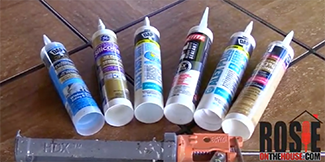How To Seal Cracks and Gaps Around Your Home
How To Seal Cracks And Gaps Around Your Home
Spring is here, wildflowers are blooming, birds are building nests, and nasty bugs are looking for cracks and openings in your house so that they can invade and multiply.
One of the best ways to keep bugs and critters at bay is by caulking and sealing any openings and cracks on the outside of your home. Make sure to buy clear caulk designed for exterior use so that it will expand and contract as temperatures change. It should dry in 30 minutes so that you can paint over it if you wish. It's a process to repeat every couple of years.

Use a caulking gun and apply a smooth line of caulk. Wipe it down with your finger to smooth it out. Where will you find these cracks?
- In areas around doors and windows – particularly at corners.
- Places where pipes and wires enter your home.
- Phone line penetrations.
- Vents for exhaust fans.
- Cracks in porches and stoops.
- Cracks between the weep screed at the bottom of your house and the wall. Be careful not to fill the holes in the weep screed that are needed for drainage.
Pay particular attention to sealing exterior walls of kitchens and baths, rooms that may attract pests because of the moisture and food possibilities they offer.
Ensure that doorways are fitted with tight-fitting door sweeps and weather stripping so no light can be seen around the door when viewed from inside the home. A door sweep seals cracks between the bottom of the door and the threshold. It's also possible your threshold may need repairs or adjustment. Cracks in doorsteps or stoops should be sealed.
You may also want to buy and install new door corner seal pads that you can stick to the bottom of your door jambs. They help prevent insects from entering your house. These seals should also be used on double doors that lack a central vertical support. Self-closing, spring-loaded hinges on exterior doors are also a way to keep out bugs and scorpions.
You can use wire mesh or netting to cover gaps under and between roof lines and over attic and roofline vents. This can prevent nesting pests from finding a friendly roost.
How To Seal Cracks And Gaps Around Your Home
March Home Maintenance To-Do | #SealCracks
###
